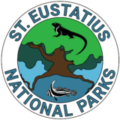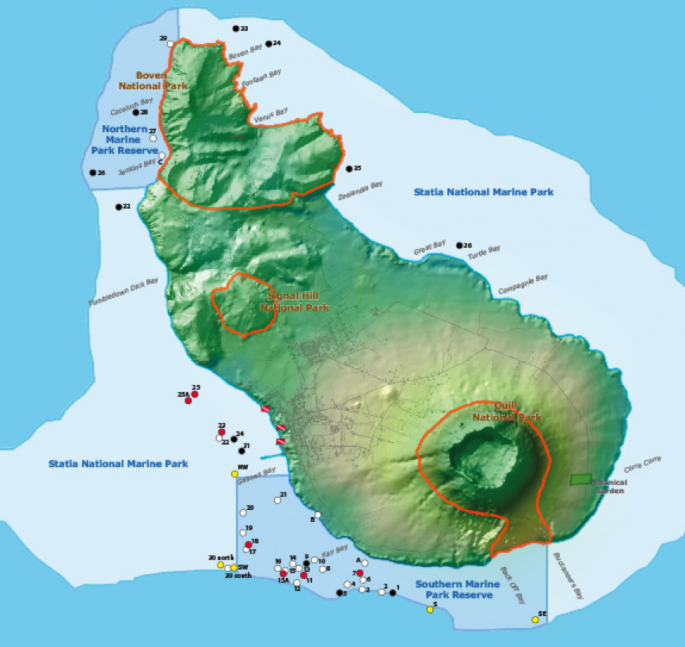
St. Eustatius National Marine Park
Our St Eustatius National Marine Park was created in 1996 and it surrounds the entire island. We actively manage the area from the high-water line to the 30m depth contour, which totals 27.3 km² of marine protected area.
This is essential in protecting Statia’s pristine coral reefs, 18th century shipwrecks and vibrant sea life, such as sharks, rays, and sea turtles.
There are two Reserves within the Marine Park, one in the North and one in the South, designated as no fishing and no anchoring zones.
This means that many of the coral reefs in the Reserves are in excellent condition. The Reserves are good news for the fishermen and divers too: healthy reefs mean more fish!
Quill / Boven National Park
Our Quill National Park is not easily missed. The dormant volcano called the ‘Quill’ is one of the first things you see when you arrive on Statia. We manage the area from the 250m-elevation line upwards including the volcano crater.
There are 8 trails that allow you to ascend through thorny woodland all the way up to the elfin forest at the crater’s rim. Take a trip to Mazinga Peak, the highest point on St. Eustatius, offering a 360-degree view of the island that will take your breath away.
Boven National Park covers Statia’s Northern Hills. Although it is only 2 miles away from the ‘Quill’, it is very different. Cacti and Acacia bushes cover rocky outcrops and open grassland. Several trails snake through valleys and along ridges, bringing you to secluded bays and viewpoints.


Miriam C.Schmidt Botanical Garden
Miriam C. Schmidt was the founder of our Botanical Garden (1999). She wanted to create a place where native and tropical plants could be cultivated without the disruption of roaming animals and creates a peaceful space for the community.
Found on the lower southern slopes of the Quill, it is the perfect place to see nature up close. Filled with birds, lizards and insects, our Botanical garden is a nature haven.
Our botanical garden is currently a work in progress due to hurricane damage, drought and roaming animals. Support our work by making a donation here or in person at the National Parks Office.









